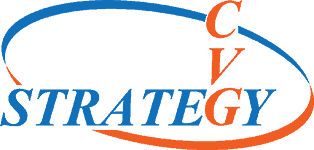MIL STD 810 Training Seminars and Webinars
MIL-STD-810 Training class (2 Days) focuses on the purpose of each method, the test procedures in each method, and effective approaches for application of environmental testing through planning. CVG Strategy’s MIL-STD-810 Training class is offered as an on-line live MIL-STD-810 Training webinar or onsite as scheduled. Students should have some engineering or technical experience in order to understand the concepts.
CVG Strategy’s subject matter experts have prepared, planned, and conducted over 400 client tests in the past ten years. This experience as providing Product Test Witness support helps our instructors to provide real-world best practice solutions and practical MIL-STD-810 explanations for our MIL-STD-810 Training class.
Who should attend this MIL-STD-810 Training class?
The MIL-STD-810 Training course is designed for Program Managers, Project Leads, Test Engineers, Design Engineers, Qualification Test Procedure/Plan Writers, anyone who works with customer requirements, and Test Laboratory Personnel responsible for generating quotes for customers. It covers all of the Dynamic and Climatic tests described in MIL-STD-810. It also covers the purpose of each test and how to apply the specified test to different applications.
REGISTER NOW!
What will you learn at the MIL-STD-810 Training class?
How to:
- perform vibration, shock and climatic tests
- design test setups for operational testing
- determine required equipment for monitoring and performance of operational tests
- employ the MIL-STD-810 methodology to correctly apply the tailoring methodology to design appropriate laboratory tests.
- interpret vibration and shock test requirements and results
- plan and manage vibration, shock and climatic tests
- specify and evaluate vibration and shock test fixtures
Why should I take this MIL-STD-810 Training class?
Technical and Engineering Professionals who need practical knowledge about MIL-STD-810 testing their work requirements require them to design or produce (ruggedized) products that must pass MIL-STD-810 testing.
Program Managers who write contracts for or specifications procuring military equipment.
Test Engineers who witness and approve testing that is specified to be performed in accordance with MIL-STD-810.
Test Lab Technicians who need to perform tests in accordance with MIL-STD-810.
What is included?
- Two-Day MIL-STD-810 Training class (8am-5pm)
- Available Online (live) or Onsite
- Quiz after each section
- Student MIL-STD-810 Training Manual (course material)
- MIL-STD-810G and MIL-STD-810H standards
- Training Certificate
REGISTER NOW!
Schedule
This Two-Day MIL-STD-810 Training Class will be offered each month and will begin at 8:00am EDT with one 15-minute break mid-morning. The lunch break will be from 12:00pm to 1:00pm EDT with class restarting promptly at 1:00pm EDT. There will be a 15-minute afternoon break around 3:00pm EDT, and the class will finish at 5:00pm EDT. Students are encouraged to ask as many questions as possible in order to ensure that the maximum learning impact is realized.
Objectives:
- Understanding of MIL-STD-810G-1 & MIL-STD-810H.
- Achieving optimal Design Evaluation from the MIL-STD-810 standard.
- Knowledge of types of vibration, shock and climatic tests.
- Ability to tailor materiel item’s environmental design and test limits to the planned conditions.
- Understanding the development of Detailed Environmental Test Procedures that replicate the effects of environments on materiel.
- Understanding Sine and Random Vibration, classical waveform shock testing and drop testing.
- Guidance on test setup and design for operational testing.
- Ability to document climatic test requirements, origination, equipment required, test methodology and understanding of results
MIL-STD-810 Training Course Content:
- Introduction, History and Scope of MIL-STD-810 (G-1 & H)
- Environmental Engineering Programs
- Environmental Management
- Engineering Tasks and Engineering Management
- Guidance for Program Management and Environmental Tailoring
- Environmental Test Procedures
- Typical Format for Environmental Test Procedures
- Testing methods’ Introduction and Limitations
- History and Rationale
- Effects of the Environment
- Test Sequence and Procedures
- Analysis of Results
- Equipment Needed
- Sinusoidal vs. random vibration testing systems
- Testing specifications, standards and procedures.
- Vibration and shock test fixture design, fabrication, experimental evaluation and usage
- Shock measurement, shock response spectrum (SRS) and shock testing
MIL-STD-810 Training Course content will include an overview on Sine and Random Vibration, also classical waveform shock testing, drop testing and Shock Response Spectrum Testing. The class will discuss each climatic test individually, focusing on requirements, origination, equipment required, test methodology and understanding of results.
There will be an emphasis on test planning so that the project goals, levels and methodology reduce the chance of an over test or an under test condition which could lead to a program or product failure.
REGISTER NOW!
Syllabus:
- Role of Testing and Test Specialists
- MIL-STD-810 History
- MIL-STD-810 Training – Part 1 and 3
- Developing a LCEP Training
- Developing a Detailed Environmental Test Plan
- Preparing for the Lab
- Part Two – MIL-STD-810G and MIL-STD-810H
- Method 500 Low Pressure (Altitude)
- Method 501 Low Temperature
- Method 502 High Temperature
- Method 503 Temperature Shock
- Method 504 Contamination by Fluids
- Method 505 Solar Radiation
- Method 506 Rain
- Method 507 Humidity
- Method 508 Fungus
- Method 509 Salt Fog
- Method 510 Sand and Dust
- Method 511 Explosive Atmosphere
- Method 512 Immersion
- Method 513 Acceleration
- Method 514 Vibration
- Method 515 Acoustic Noise
- Method 516 Shock
- Method 517 Pyroshock
- Method 518 Acidic Atmosphere
- Method 519 Gunfire Shock
- Method 520 Combined Environments
- Method 521 Icing/Freezing Rain
- Method 522 Ballistic Shock
- Method 523 Vibro-Acoustic/Temperature
- Method 524 Freeze-Thaw
- Method 525 Time Waveform Replication
- Method 526 Rail Impact
- Method 527 Multi-Exciter Testing
- Method 528 Mechanical Vibrations of Shipboard Materiel
MIL-STD-810 Environmental Management and Engineering Tasks
- Task 401 – Environmental Engineering Management Plan (EEMP)
- Task 402 – Life Cycle Environmental Profile (LCEP)
- Task 403 – Operational Environment Documentation (OED)
- Task 404 – Environmental Issues/Criteria List (EICL)
- Task 405 – Detailed Environmental Test Plans (DETP)
- Task 406 – Environmental Test Reports (ETR)
- Detailed Program Management Guidance
- Environmental Tailoring Guidelines for Environmental Engineering Specialists (EES)
- C-1 Areas of occurrence of climatic categories A1, A2, & A3 C-5
- C-2 Areas of occurrence of climatic categories B1, B2, & B3 C-6
- C-3 Areas of occurrence of climatic categories C1, C2, & C3 C
- C-1 Areas of occurrence of climatic categories A1, A2, & A3 C-5
- C-2 Areas of occurrence of climatic categories B1, B2, & B3 C-6
- C-3 Areas of occurrence of climatic categories C1, C2, & C3 C-7
How Can We Help?
Take a look around our site and contact us for more information on how we can help you meet your challenges.
Latest News
Nicaragua Export Restrictions Increased by U.S.
Nicaragua export restrictions have been increased by both the Directorate of Defense Trade Controls (DDTC) and the Bureau of Industry and Security (BIS) as of



